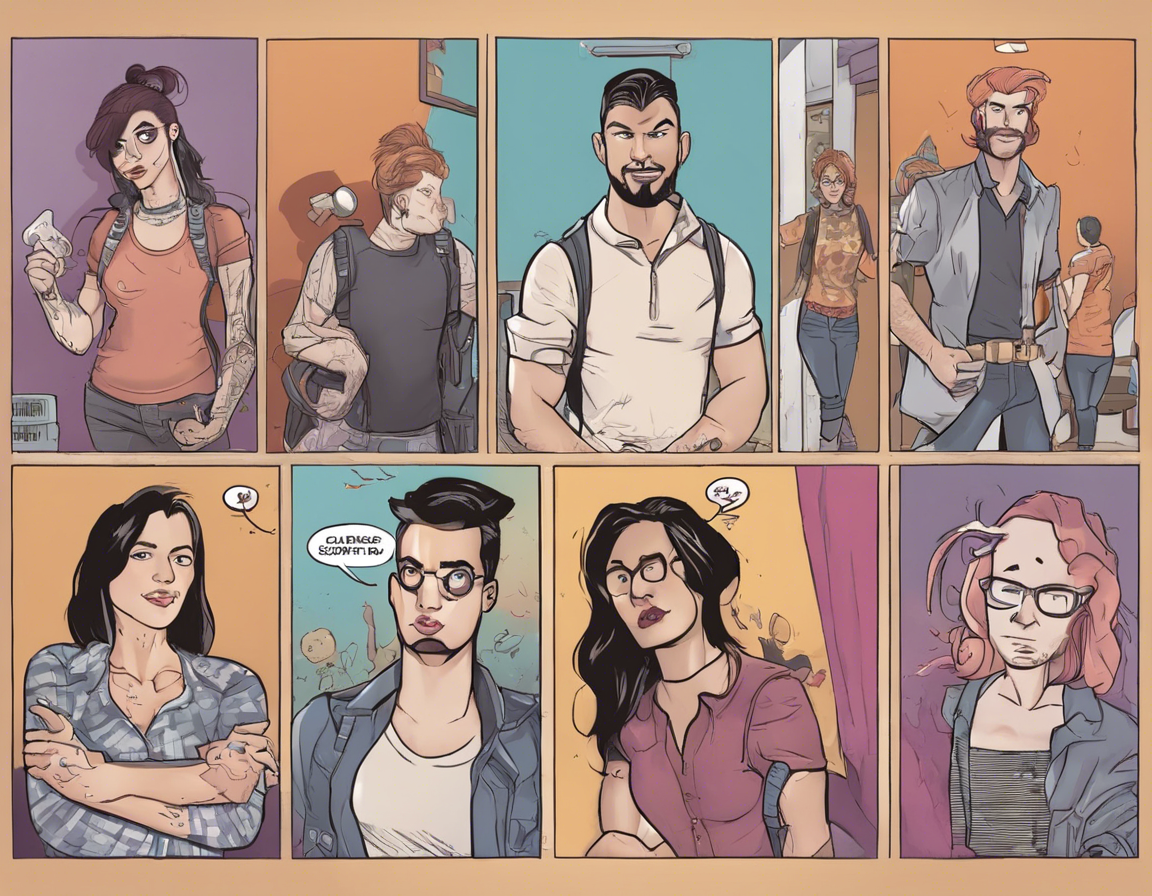Exploring Gender: Transformative Stories in Bender Comics


Introduction
Gender has long been a topic of fascination and debate across various forms of media, including comics. When it comes to representing gender diversity and challenging traditional gender norms, Bender Comics stands out as a pioneer in the industry. Through its diverse range of characters and storylines, Bender Comics has contributed significantly to the representation and exploration of gender identity and expression. In this article, we will dive into the world of Bender Comics and explore the transformative stories that have captivated audiences and sparked important conversations about gender.
The Evolution of Gender Representation in Comics
Comics have a long history of grappling with gender representation, with many early comic book characters conforming to stereotypical and traditional gender roles. However, as society has evolved, so too have comics. Bender Comics has been at the forefront of this evolution, pushing boundaries and challenging norms through the creation of diverse and multifaceted characters.
Key Characters in Bender Comics
One of the standout features of Bender Comics is its roster of complex and multidimensional characters that represent a wide spectrum of gender identities and expressions. From the androgynous hero who defies gender stereotypes to the genderfluid villain with a tragic past, each character in Bender Comics brings something unique to the narrative.
- Alexis/Alex – A central character in Bender Comics, Alexis/Alex embodies the fluidity of gender expression. Through their journey, readers are invited to reconsider preconceived notions about gender and identity.
- Max – Max is a non-binary character who challenges the traditional binary notion of gender. Their storyline explores themes of self-discovery and acceptance in a world that often demands conformity.
- Samira – As a trans woman, Samira brings a unique perspective to Bender Comics. Her story sheds light on the challenges faced by transgender individuals and the importance of representation in media.
Themes of Gender Identity and Expression
Bender Comics delves deep into themes of gender identity and expression, offering readers a nuanced exploration of what it means to break free from traditional gender roles. Through its storylines and character arcs, Bender Comics challenges stereotypes and empowers audiences to embrace their authentic selves.
- Self-Discovery – Many characters in Bender Comics embark on journeys of self-discovery, grappling with questions of identity and belonging. These narratives resonate with readers who may be going through similar experiences.
- Acceptance – Bender Comics also addresses the importance of acceptance and understanding when it comes to gender diversity. Characters learn to embrace themselves and others, fostering a message of inclusivity.
- Visibility – By putting gender diverse characters at the forefront, Bender Comics helps shine a light on underrepresented communities and voices. This visibility is crucial in promoting diversity and representation in media.
Impact on the Comic Industry
The impact of Bender Comics on the comic industry cannot be understated. By centering gender diversity and inclusivity, Bender Comics has paved the way for other publishers and creators to follow suit. Readers have responded enthusiastically to the authenticity and depth of representation in Bender Comics, signaling a growing demand for more inclusive and diverse content.
Frequently Asked Questions (FAQs)
1. Why is gender diversity in comics important?
– Gender diversity in comics is important because it reflects the diversity of real-world experiences and promotes inclusivity and representation.
2. How can comics contribute to conversations about gender identity?
– Comics can contribute to conversations about gender identity by introducing complex and authentic characters and storylines that challenge traditional norms.
3. What role do comic creators play in promoting gender diversity?
– Comic creators play a crucial role in promoting gender diversity by crafting inclusive narratives and authentic characters that resonate with audiences.
4. How does gender representation in comics impact readers?
– Gender representation in comics can have a powerful impact on readers, helping them feel seen and understood while also challenging prejudices and stereotypes.
5. What are some key elements of effective gender representation in comics?
– Authenticity, complexity, and nuance are key elements of effective gender representation in comics, as they allow readers to connect with characters on a deeper level.
Conclusion
In conclusion, Bender Comics has redefined the comic landscape by prioritizing gender diversity and inclusivity. Through its compelling characters and thought-provoking storylines, Bender Comics has opened up important conversations about gender identity and expression. As readers continue to demand more inclusive and diverse content, it is clear that comics like Bender Comics will play a pivotal role in shaping the future of the industry.
- 74
- 0

0 Comments